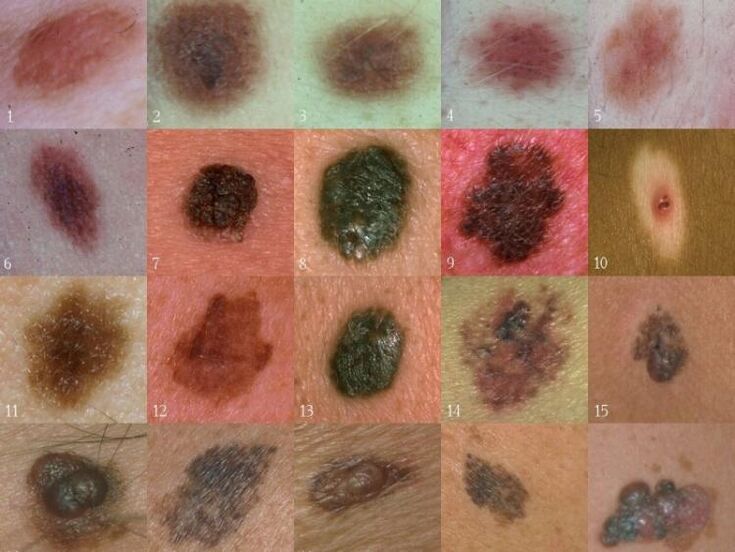
Some types of human papillomavirus, penetrate the damaged area of skin, causing rapid growth of cells in its upper layer. As a result, warts form. The type of wart can vary. They form everywhere on the skin and can vary in size and color. Usually, warts do not bring significant problems, they disappear on their own. However, in some cases, it is beneficial to consult a doctor and remove it.
Types of warts on the body are usually differentiated according to the place of their distribution.
Types of warts
- Abusive (normal)
- Plantar,
- Average (ageless),
- Genital warts (genital warts)
- Filiform,
- Senile (seborrheic keratoma).
Ordinary warts
Abrasive or common - this is the most common type of neoplasm. They are small nodules (up to 10 mm) with a rough surface. They protrude slightly above the surface of the skin and are not painful at all. Common warts form on any part of the body, but most often they are on the neck, on the head, at the elbows or knees.
Another common wart feature is the appearance on the "main" side, a large, smaller wart.
Plantar
This is one of the common types of warts, it is also called "Spitz". It is located on the skin of the feet, most often next to the soles of the feet. It consists of several papillae, fused with each other, surrounded by rollers. Sometimes Spitz looks like a dense thorn that has grown on the skin. Sometimes plantar warts can grow in the skin. Then they look like a fossa surrounded by rollers with prominent papillae. Plantar warts often bother a person because they cause discomfort as well as pain while walking.
Their formation can be provoked by tight or uncomfortable shoes. In such shoes, areas of the skin are damaged and become more vulnerable to the penetration and development of human papillomavirus.
rata
Flat warts are more common at an early age, in children and adolescents, and are therefore called young. This is a small formation (usually about 3 mm). They can be round or irregular. The surface of juvenile warts is smooth and flat. The color is usually the same as the skin, sometimes flat warts can have a yellowish color. Warts of this type can form on any part of the skin, but their "favorite" places are the face and hands.
Flat warts usually do not cause physical discomfort and disappear over time. However, when placed in a prominent place, it causes aesthetic discomfort, so patients often turn to doctors and cosmetic specialists to remove it.
Genital warts
The warts are localized in the genital area and the infection occurs through sexual intercourse. The most common spread of genital warts is the groin, penis, labia, and anus. Also, this type of wart can form in the mouth.
Genital warts are small skin growths with sharp ends, small papillae. These papillae merge with each other and often look like cauliflower. The color of genital warts is dark fleshy, pink.
Treatment of genital warts is carried out by a dermatovenerologist with the participation of a gynecologist or urologist.
Filiform
Filiform warts (acrochords) are more common in older people. They are elongated growths that resemble threads. The size of filamentous warts can be up to 1 cm Localization of the acrochord is the skin of the neck and face. Often, they are formed on the eyelids, lips. There are filamentous warts in the armpits.
The acrochord is often injured because of its elongated shape. By themselves, in most cases, they do not disappear, moreover, after removal, there is often a recurrence with the formation of new warts in the same place.
sniffing
Seborrheic keratomas most often develop in old age as a result of skin changes. They are located on the body anywhere, but more often on the neck, on the arms, on the chest. This is a small flat papule with a clear border. Senile warts are more often pinkish -yellow or brown, up to 2 cm in size. They can be singular, and can form an overall focus. Dead skin cells form the basis of the neoplasm. At first they are soft, but over time they become dense, covered with cracks.
Senile warts require careful attention, as they are prone to malignant transformation.
So, there are many different types of warts. Most of them are harmless, but it is better, without delay, to consult a doctor and make sure of this.















































































